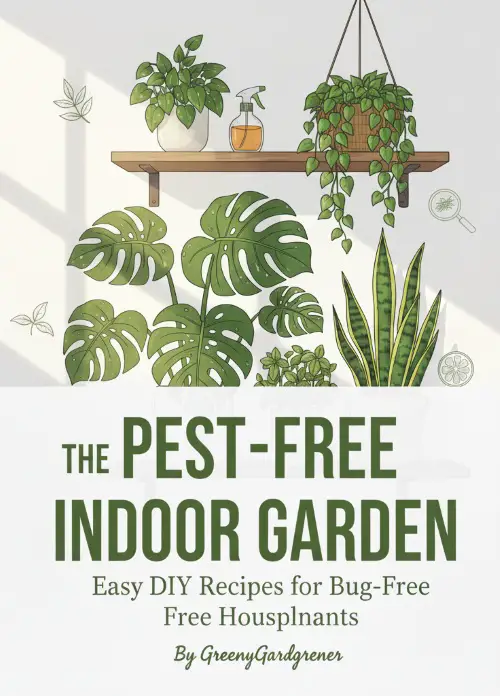Are Pothos Toxic to Humans? A Complete Guide
Pothos plants, scientifically known as Epipremnum aureum, are beloved for their lush, trailing vines and low-maintenance care. However, alongside their popularity as a decorative houseplant, there is a concern regarding their safety.
The question arises: Are pothos toxic to humans? The short answer is yes. Pothos plants contain harmful compounds that can cause adverse reactions if mishandled or ingested. This article will explore the risks, symptoms of exposure, and safety tips to ensure you can enjoy pothos responsibly.
What's On the Page
- 1 Understanding the Toxicity of Pothos
- 2 How Can Pothos Affect Humans?
- 3 Symptoms of Pothos Poisoning in Humans
- 4 First Aid Measures for Pothos Exposure
- 5 Precautions for Keeping Pothos at Home
- 6 Alternatives to Pothos for a Safer Home
- 7 Why People Still Choose Pothos
- 8 How to Dispose of Pothos Safely
- 9 Final Thoughts on Pothos Toxicity
Understanding the Toxicity of Pothos
The primary reason pothos is toxic lies in its content of calcium oxalate crystals. These needle-like compounds are present in all parts of the plant, including its leaves, stems, and roots. When humans come into contact with these crystals, they can irritate the skin, eyes, or mucous membranes.
Ingesting even small amounts of the plant can lead to discomfort, especially in vulnerable groups such as children and individuals with pre-existing conditions.
How Can Pothos Affect Humans?
Human exposure to pothos can occur in several ways, including:

🌿 The Companion Planting & Gardening Book (eBook)
Bigger harvests, fewer pests — natural pairings & simple layouts. $2.40
Get – $2.40
🪴 The Pest-Free Indoor Garden (eBook)
DIY sprays & soil tips for bug-free houseplants. $1.99
Get – $1.99- Skin Contact: Touching the plant’s sap can cause localized irritation or a rash.
- Ingestion: Swallowing any part of the plant can result in a burning sensation in the mouth, throat, and gastrointestinal system.
- Eye Contact: Accidental transfer of sap to the eyes may lead to redness, itching, and watering.
Understanding these pathways can help minimize risk and encourage safe handling.
Symptoms of Pothos Poisoning in Humans
Depending on the type and level of exposure, symptoms of pothos toxicity can vary in severity. Common symptoms include:
1. Skin Reactions
- Redness and inflammation
- Persistent itching or burning sensations
- Development of a rash or blisters in severe cases
2. Oral and Throat Irritation
- Intense burning in the mouth or throat
- Swelling of the lips, tongue, or throat
- Difficulty swallowing or speaking
3. Digestive Distress
- Nausea and vomiting
- Stomach cramps or pain
- In rare cases, diarrhea
4. Eye Irritation
- Redness and watering
- Stinging or burning sensations
- Temporary blurred vision
First Aid Measures for Pothos Exposure
If you or someone in your household comes into contact with pothos, take immediate action to minimize the effects.
1. Skin Contact
- Rinse the affected area thoroughly with soap and water.
- Avoid scratching to prevent further irritation.
- Apply a topical antihistamine or hydrocortisone cream to soothe itching.
2. Ingestion
- Rinse the mouth with cool water and remove any remaining plant material.
- Sip water or milk to ease oral discomfort.
- Avoid inducing vomiting unless instructed by a healthcare provider.
- Seek medical attention if symptoms persist or worsen.
3. Eye Exposure
- Flush the eyes with clean, cool water for at least 10 minutes.
- Avoid rubbing the eyes, as this can exacerbate irritation.
- Consult a healthcare professional if symptoms do not improve.
When to Seek Medical Attention
- Severe swelling or difficulty breathing
- Persistent or worsening symptoms
- Exposure in vulnerable individuals, such as young children or those with allergies
Precautions for Keeping Pothos at Home
Despite its toxicity, pothos remains one of the most popular houseplants due to its aesthetic appeal and easy care. By following a few simple precautions, you can enjoy the plant safely:
- Wear Protective Gloves: Use gloves when handling or pruning pothos to avoid direct skin contact with its sap.
- Place Out of Reach: Ensure the plant is placed on high shelves or in hanging baskets, away from children and pets.
- Educate Household Members: Inform everyone about the plant’s toxic nature to prevent accidental exposure.
- Wash Hands After Handling: Always wash your hands thoroughly after working with the plant.
Alternatives to Pothos for a Safer Home
If you are concerned about the toxicity of pothos, consider switching to pet- and child-safe plants that offer similar visual appeal. Some excellent alternatives include:
- Areca Palm (Dypsis lutescens): A non-toxic plant with elegant fronds.
- Boston Fern (Nephrolepis exaltata): Known for its lush, feathery foliage.
- Parlor Palm (Chamaedorea elegans): A low-maintenance option that thrives indoors.
These plants allow you to enjoy greenery without worrying about potential hazards.
Why People Still Choose Pothos
Despite their toxicity, pothos plants continue to be a favorite for indoor gardening enthusiasts. Here’s why:
- Aesthetic Appeal: Pothos plants are known for their vibrant green or variegated leaves and cascading growth, which make them a stunning addition to any room.
- Low Maintenance: They thrive in low light, require minimal watering, and are resilient to varying conditions.
- Air Purification: Studies have suggested that pothos can help filter toxins from indoor air, improving overall air quality.
While these benefits are significant, handling the plant responsibly is crucial.
How to Dispose of Pothos Safely
If you decide to remove pothos from your space, it is essential to dispose of it properly to prevent accidental exposure:
- Wear gloves while handling the plant.
- Cut it into manageable sections for disposal.
- Place plant debris in sealed bags to avoid accidental contact by others.
- Clean any tools and surfaces that came into contact with the plant.
Final Thoughts on Pothos Toxicity
Pothos plants are undeniably beautiful and easy to care for, but their toxic nature requires careful handling. By understanding the risks and adopting preventative measures, you can enjoy the benefits of pothos without compromising your safety. If you have children or pets at home, extra precautions are essential to prevent accidental exposure.
For those who prefer peace of mind, consider switching to non-toxic alternatives that provide similar aesthetic benefits without the risks. Whether you keep or replace your pothos, education and awareness are the keys to maintaining a safe and beautiful indoor space.
- Best Time To Transplant Shrubs – Unlock Thriving Growth & Avoid Stress - December 22, 2025
- Brown Bug Lots Of Legs – Your Comprehensive Guide To Identifying And - December 22, 2025
- Ladybug On A Flower – Your Complete Guide To Attracting And Nurturing - December 22, 2025
